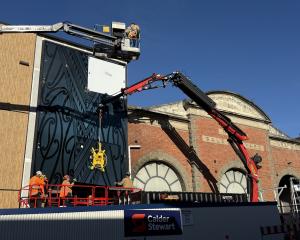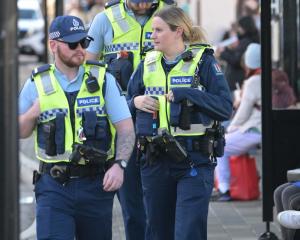The Dunedin City Council has commissioned a consultant, Viastrada, to collect data on pedestrian and traffic movements at eight busy intersections in the Octagon and along parts of George and Princes Sts.
The two-day data collection operation began yesterday and would conclude today.
Results and analysis would be compiled and presented to councillors later this year, council senior traffic engineer Ron Minnema said.
It was possible the results could support changes to some, or all, of the intersections being studied, but the Otago Regional Council would also need to be consulted about any possible impact on the public transport network, he said.
Barnes Dance crossings stop all vehicles and allow pedestrians to cross in any direction.
Calls to investigate the idea came from two speakers at a council public forum last year.
Council staff were initially reluctant, citing the cost and fears traffic congestion that resulted would make the streets "unworkable".
However, Mr Minnema said the latest study came from work on the council's new central city plan, which had also been considering whether the system would be beneficial.
Any changes would not be implemented until next year at the earliest, and would need to be included in central city plan work programmes, based on available funding, he said.
The eight intersections being studied are in the area stretching from the Princes St-Rattray St intersection through the Octagon, north to the George St-Hanover St intersection.
The study by Viastrada is expected to cost $35,000, including $5000 on the data collection component.
Council city strategy and development general manager Dr Sue Bidrose, speaking in September last year, estimated it could cost $200,000 to change six major intersections in the central city.
Intersections being studied:
- George St-Hanover St.
- George St-St Andrew St.
- George St-Moray Pl.
- George St-The Octagon.
- Princes St-The Octagon.
- Princes St-Moray Pl.
- Princes St-Dowling St.
- Princes St-Rattray St.












